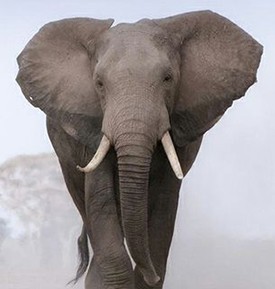Multiple Adaptations To Temperature In Birds & Mammals
News
Posted: Dec 23, 2015 - 09:00am

Understanding the different ways organisms can adapt to environmental temperatures is central to understanding how they will respond to climate change.
In a study released yesterday in Proceedings of the National Academy of Sciences (PNAS), scientists at the University of New Mexico use biophysical models of thermoregulation in order to reveal multiple ways birds and mammals adapt to a wide range of temperatures.
The Scholander-Irving model illustrates how warm-blooded birds and mammals maintain body temperature by balancing the rate of metabolic heat production with the rate of heat lost to the environment.
Body size has been shown to affect both rates and, as a result, influences an organism’s thermal limits – big species are generally able to deal with colder temperatures than smaller species and vice versa. This has been used to explain Bergmann’s rule, the geographic pattern of increasing size with decreasing temperature that is seen in some groups of animals. However, after looking at the distribution of body sizes across temperatures on Earth, the scientists saw that birds and mammals of nearly every size live basically everywhere.
Examples include tiny chickadees that can survive cold Alaskan winters, or elephants that live in some of the hottest parts of Africa. Clearly size isn't everything, the scientists hypothesized. The researchers extended the Scholander-Irving model to understand how species adapt to temperature without changing size.
The research includes three graduate students from UNM: Trevor Fristoe, now a postdoc at Washington University in St. Louis, Mo., Robbie Burger, now a postdoc at the University of North Carolina, current UNM graduate student Meghan Balk, along with UNM Distinguished Professor James Brown.
Read the full story at UNM Newsroom
